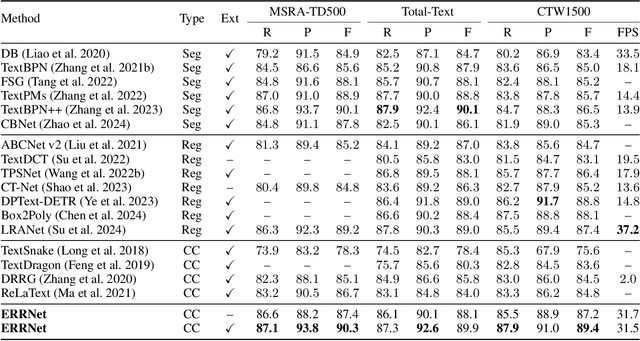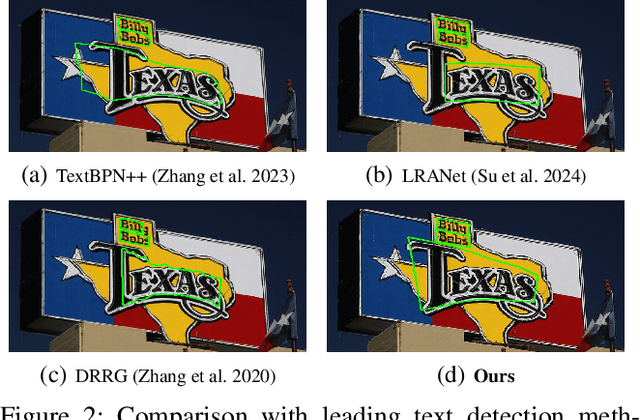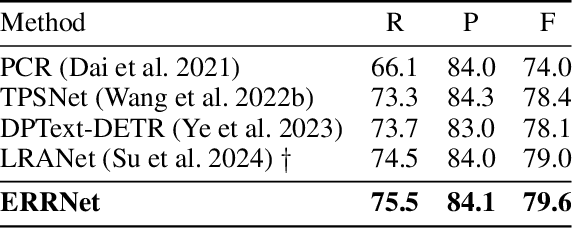Kai Hu
Transferable Adversarial Attacks on Black-Box Vision-Language Models
May 02, 2025Abstract:Vision Large Language Models (VLLMs) are increasingly deployed to offer advanced capabilities on inputs comprising both text and images. While prior research has shown that adversarial attacks can transfer from open-source to proprietary black-box models in text-only and vision-only contexts, the extent and effectiveness of such vulnerabilities remain underexplored for VLLMs. We present a comprehensive analysis demonstrating that targeted adversarial examples are highly transferable to widely-used proprietary VLLMs such as GPT-4o, Claude, and Gemini. We show that attackers can craft perturbations to induce specific attacker-chosen interpretations of visual information, such as misinterpreting hazardous content as safe, overlooking sensitive or restricted material, or generating detailed incorrect responses aligned with the attacker's intent. Furthermore, we discover that universal perturbations -- modifications applicable to a wide set of images -- can consistently induce these misinterpretations across multiple proprietary VLLMs. Our experimental results on object recognition, visual question answering, and image captioning show that this vulnerability is common across current state-of-the-art models, and underscore an urgent need for robust mitigations to ensure the safe and secure deployment of VLLMs.
MIG: Automatic Data Selection for Instruction Tuning by Maximizing Information Gain in Semantic Space
Apr 18, 2025Abstract:Data quality and diversity are key to the construction of effective instruction-tuning datasets. % With the increasing availability of open-source instruction-tuning datasets, it is advantageous to automatically select high-quality and diverse subsets from a vast amount of data. % Existing methods typically prioritize instance quality and use heuristic rules to maintain diversity. % However, this absence of a comprehensive view of the entire collection often leads to suboptimal results. % Moreover, heuristic rules generally focus on distance or clustering within the embedding space, which fails to accurately capture the intent of complex instructions in the semantic space. % To bridge this gap, we propose a unified method for quantifying the information content of datasets. This method models the semantic space by constructing a label graph and quantifies diversity based on the distribution of information within the graph. % Based on such a measurement, we further introduce an efficient sampling method that selects data samples iteratively to \textbf{M}aximize the \textbf{I}nformation \textbf{G}ain (MIG) in semantic space. % Experiments on various datasets and base models demonstrate that MIG consistently outperforms state-of-the-art methods. % Notably, the model fine-tuned with 5\% Tulu3 data sampled by MIG achieves comparable performance to the official SFT model trained on the full dataset, with improvements of +5.73\% on AlpacaEval and +6.89\% on Wildbench.
STEI-PCN: an efficient pure convolutional network for traffic prediction via spatial-temporal encoding and inferring
Apr 10, 2025Abstract:Traffic data exhibits complex temporal, spatial, and spatial-temporal correlations. Most of models use either independent modules to separately extract temporal and spatial correlations or joint modules to synchronously extract them, without considering the spatial-temporal correlations. Moreover, models that consider joint spatial-temporal correlations (temporal, spatial, and spatial-temporal correlations) often encounter significant challenges in accuracy and computational efficiency which prevent such models from demonstrating the expected advantages of a joint spatial-temporal correlations architecture. To address these issues, this paper proposes an efficient pure convolutional network for traffic prediction via spatial-temporal encoding and inferring (STEI-PCN). The model introduces and designs a dynamic adjacency matrix inferring module based on absolute spatial and temporal coordinates, as well as relative spatial and temporal distance encoding, using a graph convolutional network combined with gating mechanism to capture local synchronous joint spatial-temporal correlations. Additionally, three layers of temporal dilated causal convolutional network are used to capture long-range temporal correlations. Finally, through multi-view collaborative prediction module, the model integrates the gated-activated original, local synchronous joint spatial-temporal, and long-range temporal features to achieve comprehensive prediction. This study conducts extensive experiments on flow datasets (PeMS03/04/07/08) and speed dataset (PeMS-Bay), covering multiple prediction horizons. The results show that STEI-PCN demonstrates competitive computational efficiency in both training and inference speeds, and achieves superior or slightly inferior to state-of-the-art (SOTA) models on most evaluation metrics.
Distilling Knowledge from Heterogeneous Architectures for Semantic Segmentation
Apr 10, 2025Abstract:Current knowledge distillation (KD) methods for semantic segmentation focus on guiding the student to imitate the teacher's knowledge within homogeneous architectures. However, these methods overlook the diverse knowledge contained in architectures with different inductive biases, which is crucial for enabling the student to acquire a more precise and comprehensive understanding of the data during distillation. To this end, we propose for the first time a generic knowledge distillation method for semantic segmentation from a heterogeneous perspective, named HeteroAKD. Due to the substantial disparities between heterogeneous architectures, such as CNN and Transformer, directly transferring cross-architecture knowledge presents significant challenges. To eliminate the influence of architecture-specific information, the intermediate features of both the teacher and student are skillfully projected into an aligned logits space. Furthermore, to utilize diverse knowledge from heterogeneous architectures and deliver customized knowledge required by the student, a teacher-student knowledge mixing mechanism (KMM) and a teacher-student knowledge evaluation mechanism (KEM) are introduced. These mechanisms are performed by assessing the reliability and its discrepancy between heterogeneous teacher-student knowledge. Extensive experiments conducted on three main-stream benchmarks using various teacher-student pairs demonstrate that our HeteroAKD outperforms state-of-the-art KD methods in facilitating distillation between heterogeneous architectures.
UniHDSA: A Unified Relation Prediction Approach for Hierarchical Document Structure Analysis
Mar 20, 2025Abstract:Document structure analysis, aka document layout analysis, is crucial for understanding both the physical layout and logical structure of documents, serving information retrieval, document summarization, knowledge extraction, etc. Hierarchical Document Structure Analysis (HDSA) specifically aims to restore the hierarchical structure of documents created using authoring software with hierarchical schemas. Previous research has primarily followed two approaches: one focuses on tackling specific subtasks of HDSA in isolation, such as table detection or reading order prediction, while the other adopts a unified framework that uses multiple branches or modules, each designed to address a distinct task. In this work, we propose a unified relation prediction approach for HDSA, called UniHDSA, which treats various HDSA sub-tasks as relation prediction problems and consolidates relation prediction labels into a unified label space. This allows a single relation prediction module to handle multiple tasks simultaneously, whether at a page-level or document-level structure analysis. To validate the effectiveness of UniHDSA, we develop a multimodal end-to-end system based on Transformer architectures. Extensive experimental results demonstrate that our approach achieves state-of-the-art performance on a hierarchical document structure analysis benchmark, Comp-HRDoc, and competitive results on a large-scale document layout analysis dataset, DocLayNet, effectively illustrating the superiority of our method across all sub-tasks.
DocVideoQA: Towards Comprehensive Understanding of Document-Centric Videos through Question Answering
Mar 20, 2025Abstract:Remote work and online courses have become important methods of knowledge dissemination, leading to a large number of document-based instructional videos. Unlike traditional video datasets, these videos mainly feature rich-text images and audio that are densely packed with information closely tied to the visual content, requiring advanced multimodal understanding capabilities. However, this domain remains underexplored due to dataset availability and its inherent complexity. In this paper, we introduce the DocVideoQA task and dataset for the first time, comprising 1454 videos across 23 categories with a total duration of about 828 hours. The dataset is annotated with 154k question-answer pairs generated manually and via GPT, assessing models' comprehension, temporal awareness, and modality integration capabilities. Initially, we establish a baseline using open-source MLLMs. Recognizing the challenges in modality comprehension for document-centric videos, we present DV-LLaMA, a robust video MLLM baseline. Our method enhances unimodal feature extraction with diverse instruction-tuning data and employs contrastive learning to strengthen modality integration. Through fine-tuning, the LLM is equipped with audio-visual capabilities, leading to significant improvements in document-centric video understanding. Extensive testing on the DocVideoQA dataset shows that DV-LLaMA significantly outperforms existing models. We'll release the code and dataset to facilitate future research.
M-LLM Based Video Frame Selection for Efficient Video Understanding
Feb 27, 2025Abstract:Recent advances in Multi-Modal Large Language Models (M-LLMs) show promising results in video reasoning. Popular Multi-Modal Large Language Model (M-LLM) frameworks usually apply naive uniform sampling to reduce the number of video frames that are fed into an M-LLM, particularly for long context videos. However, it could lose crucial context in certain periods of a video, so that the downstream M-LLM may not have sufficient visual information to answer a question. To attack this pain point, we propose a light-weight M-LLM -based frame selection method that adaptively select frames that are more relevant to users' queries. In order to train the proposed frame selector, we introduce two supervision signals (i) Spatial signal, where single frame importance score by prompting a M-LLM; (ii) Temporal signal, in which multiple frames selection by prompting Large Language Model (LLM) using the captions of all frame candidates. The selected frames are then digested by a frozen downstream video M-LLM for visual reasoning and question answering. Empirical results show that the proposed M-LLM video frame selector improves the performances various downstream video Large Language Model (video-LLM) across medium (ActivityNet, NExT-QA) and long (EgoSchema, LongVideoBench) context video question answering benchmarks.
DeepSeek-V3 Technical Report
Dec 27, 2024



Abstract:We present DeepSeek-V3, a strong Mixture-of-Experts (MoE) language model with 671B total parameters with 37B activated for each token. To achieve efficient inference and cost-effective training, DeepSeek-V3 adopts Multi-head Latent Attention (MLA) and DeepSeekMoE architectures, which were thoroughly validated in DeepSeek-V2. Furthermore, DeepSeek-V3 pioneers an auxiliary-loss-free strategy for load balancing and sets a multi-token prediction training objective for stronger performance. We pre-train DeepSeek-V3 on 14.8 trillion diverse and high-quality tokens, followed by Supervised Fine-Tuning and Reinforcement Learning stages to fully harness its capabilities. Comprehensive evaluations reveal that DeepSeek-V3 outperforms other open-source models and achieves performance comparable to leading closed-source models. Despite its excellent performance, DeepSeek-V3 requires only 2.788M H800 GPU hours for its full training. In addition, its training process is remarkably stable. Throughout the entire training process, we did not experience any irrecoverable loss spikes or perform any rollbacks. The model checkpoints are available at https://github.com/deepseek-ai/DeepSeek-V3.
TravelAgent: Generative Agents in the Built Environment
Dec 25, 2024Abstract:Understanding human behavior in built environments is critical for designing functional, user centered urban spaces. Traditional approaches, such as manual observations, surveys, and simplified simulations, often fail to capture the complexity and dynamics of real world behavior. To address these limitations, we introduce TravelAgent, a novel simulation platform that models pedestrian navigation and activity patterns across diverse indoor and outdoor environments under varying contextual and environmental conditions. TravelAgent leverages generative agents integrated into 3D virtual environments, enabling agents to process multimodal sensory inputs and exhibit human-like decision-making, behavior, and adaptation. Through experiments, including navigation, wayfinding, and free exploration, we analyze data from 100 simulations comprising 1898 agent steps across diverse spatial layouts and agent archetypes, achieving an overall task completion rate of 76%. Using spatial, linguistic, and sentiment analyses, we show how agents perceive, adapt to, or struggle with their surroundings and assigned tasks. Our findings highlight the potential of TravelAgent as a tool for urban design, spatial cognition research, and agent-based modeling. We discuss key challenges and opportunities in deploying generative agents for the evaluation and refinement of spatial designs, proposing TravelAgent as a new paradigm for simulating and understanding human experiences in built environments.
Explicit Relational Reasoning Network for Scene Text Detection
Dec 19, 2024



Abstract:Connected component (CC) is a proper text shape representation that aligns with human reading intuition. However, CC-based text detection methods have recently faced a developmental bottleneck that their time-consuming post-processing is difficult to eliminate. To address this issue, we introduce an explicit relational reasoning network (ERRNet) to elegantly model the component relationships without post-processing. Concretely, we first represent each text instance as multiple ordered text components, and then treat these components as objects in sequential movement. In this way, scene text detection can be innovatively viewed as a tracking problem. From this perspective, we design an end-to-end tracking decoder to achieve a CC-based method dispensing with post-processing entirely. Additionally, we observe that there is an inconsistency between classification confidence and localization quality, so we propose a Polygon Monte-Carlo method to quickly and accurately evaluate the localization quality. Based on this, we introduce a position-supervised classification loss to guide the task-aligned learning of ERRNet. Experiments on challenging benchmarks demonstrate the effectiveness of our ERRNet. It consistently achieves state-of-the-art accuracy while holding highly competitive inference speed.
 Add to Chrome
Add to Chrome Add to Firefox
Add to Firefox Add to Edge
Add to Edge